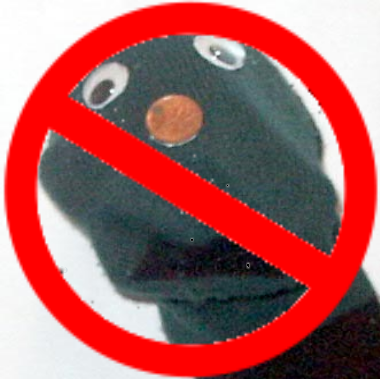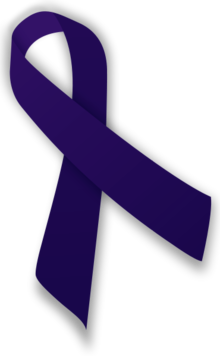
The internet has spawned assorted forms of malfeasance. The example most familiar to web users, the almost invariably anonymous troll, delights in threadjacking forums and the comments areas of periodicals and other sites, usually with gratuitous insults and off-topic interjections. The troll takes particular pleasure in touching off flame wars.
As noted in my previous post, prominent sites have begun to take steps to reduce such boorish behavior by restricting posting access to only those willing to identify themselves by name. But other, subtler forms of reprehensible online action have also emerged.
Sockpuppets & Webweasels
The term sockpuppet has come to denote people who create fictitious web identities with which to generate online attention to and (usually) praise of themselves, or solicit and/or hire other people to do this for them ― such as posting favorable comments about and reviews of their own work or other product, or negative reviews of a competing work or product, at Amazon and other marketing sites. I don’t refer here to parodic reviews, of which Amazon has posted its list of favorites, an uproarious selection. I’m concerned with fake reviews, pro and con a book or other item, posted online with the intent of helping or harming that product’s sales.

This increasingly common form of hucksterism, the logical outgrowth of a culture that tolerates the advertorial and paid product placement in its entertainments, certainly doesn’t appear exclusively at Amazon; it has infiltrated YouTube and a wide assortment of other sites. It’s a prominent part of a much larger problem, the incremental transformation of an unbought and unbossed critical cohort into a gaggle of ethically challenged writers who don’t bridle at the suggestion that they provide bespoke “reviews.” Amazon and Google and other sites have acknowledged this tendency and initiated some protocols in response, but I think there’s no reclosing that can of worms.
Here you have one of many reasons why I no longer write reviews; the waters have become terminally muddied, the wells poisoned.
Introducing the Webweasel
We need yet another term for those who hide behind false names in order to do other kinds of online harm to people, and I propose webweasel as an identifier for people with internet savvy and computer know-how who apply those skills to manipulating others with malice aforethought.

Jared Abrahams, webweasel
The term would certainly apply to Jared James Abrahams, the “19-year-old Southern California computer student [who] is facing federal prison for hacking the webcams of Miss Teen USA Cassidy Wolf and a dozen other young women worldwide and trying to blackmail them by going public with naked photos he secretly took.” (I’m quoting the November 12, 2013 report from USA Today.)
Abrahams took control of these women’s webcams and then, via pseudonymous emails, attempted to extort them. “Either you do one of the things listed below or I upload these pics and a lot more … on all your [social media] accounts for everybody to see and your dream of being a model will be transformed into a pornstar.”
Wolf, a high-school classmate of Abrahams, reported him to the authorities. Eventually the FBI took over the case; Wolf courageously went public with her experience; Abrahams has now pled guilty, and faces a minimum of 27 months and a maximum of 11 years in federal custody when sentencing takes place in March 2014.

Cyberbullying icon
This vicious little thug’s thwarted exploits represents just the tip of the iceberg of the dark underside of what can happen when you combine digital imaging, the internet, and social media. The use of photography for the purpose of blackmail goes back to the medium’s analog days, of course. But the predictable presence of lens-derived imagery ― still and video, doctored or unaltered ― in the increasingly common practices of cyberbullying, online and mass-media slut-shaming, cellphone-video celebration of rape, social-media gay outing, and digital blackmail or other acts of coercion suggests that a once-rare aberration has turned contagious, verging on epidemic, even (in certain circles) acquiring peer approval.
Those circles consist mostly of teenagers, whose brains, according to recent research and millennia of first-hand observation and accounting, have problematic wiring when it comes to impulse control, awareness of others, and sensible behavior in general. But adults engage in all those hostile actions as well, often in tandem with their teen children. Photography, broadly defined, finds itself implicated in all these practices, a fact that those of us concerned with lens culture can’t ignore. Here photography earns Susan Sontag’s broadbrush accusations of equivalency to rape, with little exaggeration involved.
The term hacker doesn’t cover much of this activity, so that’s not a useful rubric. On top of which, we have all kinds of hackers nowadays, from the specialists in planting malware and the experts in identity theft to those who, arguably, see it as their citizenly duty to tell the populace at large what their governments really do: Chelsea Manning, Edward Snowden, Jeremy Hammond, the Anonymous collective. The latter seek to provide the public with the information needed to hold the military-industrial complex accountable for its real but often covert and criminal actions, surely a commendable goal.

Man’s Life, September 1956, cover (“Weasels Ripped My Flesh”)
They can’t always achieve that without harm to individuals, including innocent bystanders, but at least they have the decency to apologize and take responsibility for that inadvertent collateral damage. This in itself distinguishes them from those who ― like Abrahams, Dharun Ravi, Guadalupe Shaw and Katelyn Roman, Ma’lik Richmond and Trenton Mays, and their many, many adult enablers and protectors ― either set out actively to damage those who’d done them no harm or energetically work to cover up their crimes and misdemeanors. I dub these sociopaths webweasels, and while I don’t expect that term to find widespread favor I’ll employ it henceforth to identify predatory internet users, including but not restricted to those who use lens-derived imagery to torment others for fun and/or profit.
•
By good fortune, while I’ve run into trolls and threadjackers I’ve had only a few encounters with webweasels.
Some years back a photo-wannabe, offended by my refusal to engage in private email correspondence with him over my online writings and outraged at my insistence on a public interchange in which he’d have to use his real name, stuffed my email inbox with endless copies of a vituperative missive. His denial-of-service barrage shut down my email client for several days, stopping only when, from another computer, I identified him to his service provider as a spammer and they closed his email account.
 More recently, a few years ago, the website of the VASA Project, through which I taught online workshops, got hit by a malicious webweasel who registered under assorted pseudonyms for classes, thus making them appear full and discouraging legitimate registrants. Since he or she did this only for my classes, I was clearly the target of a planned attack. I guessed this came from one Laughingwolf, whose theft of my work I’d written about ― and interrupted bluntly ― several weeks previously. A change in the software at the VASA site put a quick end to that. (Blogspot has since removed Laughingwolf’s blog entirely.)
More recently, a few years ago, the website of the VASA Project, through which I taught online workshops, got hit by a malicious webweasel who registered under assorted pseudonyms for classes, thus making them appear full and discouraging legitimate registrants. Since he or she did this only for my classes, I was clearly the target of a planned attack. I guessed this came from one Laughingwolf, whose theft of my work I’d written about ― and interrupted bluntly ― several weeks previously. A change in the software at the VASA site put a quick end to that. (Blogspot has since removed Laughingwolf’s blog entirely.)
So I’ve gotten off easy, compared to many. Even so, I advocate the elimination of anonymous commenting (save for exceptional circumstances), the outing of trolls, and the creation and enforcement of legislation punishing cyberbullies, slut-shamers, and other webweasels ― especially those who give photography a bad name.
•
(For an index of links to all posts in this series, click here.)
•
This post supported by a donation from Yoshio Kishi.
Forumization and Its Malcontent (6)
The internet has spawned assorted forms of malfeasance. The example most familiar to web users, the almost invariably anonymous troll, delights in threadjacking forums and the comments areas of periodicals and other sites, usually with gratuitous insults and off-topic interjections. The troll takes particular pleasure in touching off flame wars.
As noted in my previous post, prominent sites have begun to take steps to reduce such boorish behavior by restricting posting access to only those willing to identify themselves by name. But other, subtler forms of reprehensible online action have also emerged.
Sockpuppets & Webweasels
The term sockpuppet has come to denote people who create fictitious web identities with which to generate online attention to and (usually) praise of themselves, or solicit and/or hire other people to do this for them ― such as posting favorable comments about and reviews of their own work or other product, or negative reviews of a competing work or product, at Amazon and other marketing sites. I don’t refer here to parodic reviews, of which Amazon has posted its list of favorites, an uproarious selection. I’m concerned with fake reviews, pro and con a book or other item, posted online with the intent of helping or harming that product’s sales.
This increasingly common form of hucksterism, the logical outgrowth of a culture that tolerates the advertorial and paid product placement in its entertainments, certainly doesn’t appear exclusively at Amazon; it has infiltrated YouTube and a wide assortment of other sites. It’s a prominent part of a much larger problem, the incremental transformation of an unbought and unbossed critical cohort into a gaggle of ethically challenged writers who don’t bridle at the suggestion that they provide bespoke “reviews.” Amazon and Google and other sites have acknowledged this tendency and initiated some protocols in response, but I think there’s no reclosing that can of worms.
Here you have one of many reasons why I no longer write reviews; the waters have become terminally muddied, the wells poisoned.
Introducing the Webweasel
We need yet another term for those who hide behind false names in order to do other kinds of online harm to people, and I propose webweasel as an identifier for people with internet savvy and computer know-how who apply those skills to manipulating others with malice aforethought.
Jared Abrahams, webweasel
The term would certainly apply to Jared James Abrahams, the “19-year-old Southern California computer student [who] is facing federal prison for hacking the webcams of Miss Teen USA Cassidy Wolf and a dozen other young women worldwide and trying to blackmail them by going public with naked photos he secretly took.” (I’m quoting the November 12, 2013 report from USA Today.)
Abrahams took control of these women’s webcams and then, via pseudonymous emails, attempted to extort them. “Either you do one of the things listed below or I upload these pics and a lot more … on all your [social media] accounts for everybody to see and your dream of being a model will be transformed into a pornstar.”
Wolf, a high-school classmate of Abrahams, reported him to the authorities. Eventually the FBI took over the case; Wolf courageously went public with her experience; Abrahams has now pled guilty, and faces a minimum of 27 months and a maximum of 11 years in federal custody when sentencing takes place in March 2014.
Cyberbullying icon
This vicious little thug’s thwarted exploits represents just the tip of the iceberg of the dark underside of what can happen when you combine digital imaging, the internet, and social media. The use of photography for the purpose of blackmail goes back to the medium’s analog days, of course. But the predictable presence of lens-derived imagery ― still and video, doctored or unaltered ― in the increasingly common practices of cyberbullying, online and mass-media slut-shaming, cellphone-video celebration of rape, social-media gay outing, and digital blackmail or other acts of coercion suggests that a once-rare aberration has turned contagious, verging on epidemic, even (in certain circles) acquiring peer approval.
Those circles consist mostly of teenagers, whose brains, according to recent research and millennia of first-hand observation and accounting, have problematic wiring when it comes to impulse control, awareness of others, and sensible behavior in general. But adults engage in all those hostile actions as well, often in tandem with their teen children. Photography, broadly defined, finds itself implicated in all these practices, a fact that those of us concerned with lens culture can’t ignore. Here photography earns Susan Sontag’s broadbrush accusations of equivalency to rape, with little exaggeration involved.
The term hacker doesn’t cover much of this activity, so that’s not a useful rubric. On top of which, we have all kinds of hackers nowadays, from the specialists in planting malware and the experts in identity theft to those who, arguably, see it as their citizenly duty to tell the populace at large what their governments really do: Chelsea Manning, Edward Snowden, Jeremy Hammond, the Anonymous collective. The latter seek to provide the public with the information needed to hold the military-industrial complex accountable for its real but often covert and criminal actions, surely a commendable goal.
Man’s Life, September 1956, cover (“Weasels Ripped My Flesh”)
They can’t always achieve that without harm to individuals, including innocent bystanders, but at least they have the decency to apologize and take responsibility for that inadvertent collateral damage. This in itself distinguishes them from those who ― like Abrahams, Dharun Ravi, Guadalupe Shaw and Katelyn Roman, Ma’lik Richmond and Trenton Mays, and their many, many adult enablers and protectors ― either set out actively to damage those who’d done them no harm or energetically work to cover up their crimes and misdemeanors. I dub these sociopaths webweasels, and while I don’t expect that term to find widespread favor I’ll employ it henceforth to identify predatory internet users, including but not restricted to those who use lens-derived imagery to torment others for fun and/or profit.
•
By good fortune, while I’ve run into trolls and threadjackers I’ve had only a few encounters with webweasels.
Some years back a photo-wannabe, offended by my refusal to engage in private email correspondence with him over my online writings and outraged at my insistence on a public interchange in which he’d have to use his real name, stuffed my email inbox with endless copies of a vituperative missive. His denial-of-service barrage shut down my email client for several days, stopping only when, from another computer, I identified him to his service provider as a spammer and they closed his email account.
So I’ve gotten off easy, compared to many. Even so, I advocate the elimination of anonymous commenting (save for exceptional circumstances), the outing of trolls, and the creation and enforcement of legislation punishing cyberbullies, slut-shamers, and other webweasels ― especially those who give photography a bad name.
•
(For an index of links to all posts in this series, click here.)
•
This post supported by a donation from Yoshio Kishi.